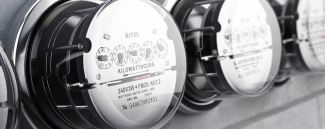Smart grid technologies represent a significant opportunity to move the energy industry into a new era of reliability, resiliency, and efficiency. Unlike a conventional grid, a smart grid uses more sophisticated communication, automation and IT systems to oversee the power flow from generation to consumption. These smart technologies provide the information and tools needed to make strategic choices about energy use.
By improving oversight and consistency, smart grid technologies improve power delivery efficiency, reduce operation and maintenance costs, improve security, and better integrate customer-owned distributed generation sources with the grid.
Through the PEER rating system, cities, utilities and major infrastructure projects can assess their existing systems and better implement smart technologies to enhance power system performance, reliability and efficiency.
Check out some of the ways PEER helps projects adopt smart grid technologies:
1. PEER encourages the implementation of master controller and communications infrastructure, which improve monitoring capability and remote control of energy systems.
Master controller systems (such as SCADA), supported with robust communication networks, improve monitoring capability and enable remote control of loads and generation sources, helping to optimize energy operations in real time.
Key PEER credit: OP credit: Master Controller; OP credit: Communications Network and Information Processing.
2. PEER encourages the use of building management systems to optimize building energy loads and conserve energy.
Building energy management systems keep a building’s climate within a specified range, illuminate rooms based on the occupancy schedule, monitor performance and device failures in all systems, and alert operators to malfunctions. Compared with a building that lacks such controls, a building with automated systems has lower energy and maintenance costs.
Key PEER credit: OP credit: Energy Management System.
3. PEER encourages the use of smart meters to enhance system monitoring and improve customers’ ability to manage energy use.
Smart meters provide projects with advanced capabilities such as automatic and remote measurement of electricity use, connection and disconnection of service, tampering detection, identification and isolation of outages, and voltage monitoring.
Key PEER credit: OP credit: Advanced Metering Infrastructure.
4. PEER encourages the use of an online, real-time data portal to help consumers better manage their energy use.
By giving customers information about their electricity consumption with visual displays of the energy usage patterns and the financial and environmental consequences, providers can spur energy conservation and improve efficiency.
Key PEER credit: GS credit: Access to Energy Usage Data.
5. PEER encourages the use of automated demand-response systems to coordinate a project’s loads and generation services with a utility in real time.
The demand-response (DR) program helps lower a utility's overall demand and save energy costs by shifting power system operations to non-peak hours. With an automated DR system, projects can respond to their utility’s DR signal in real time to meet the needs of the larger grid.
Key PEER credit: GS credit: Advanced External Interface.
PEER is here to help power systems prepare for the challenges and opportunities of the 21st century. See if your project could be a good fit.
